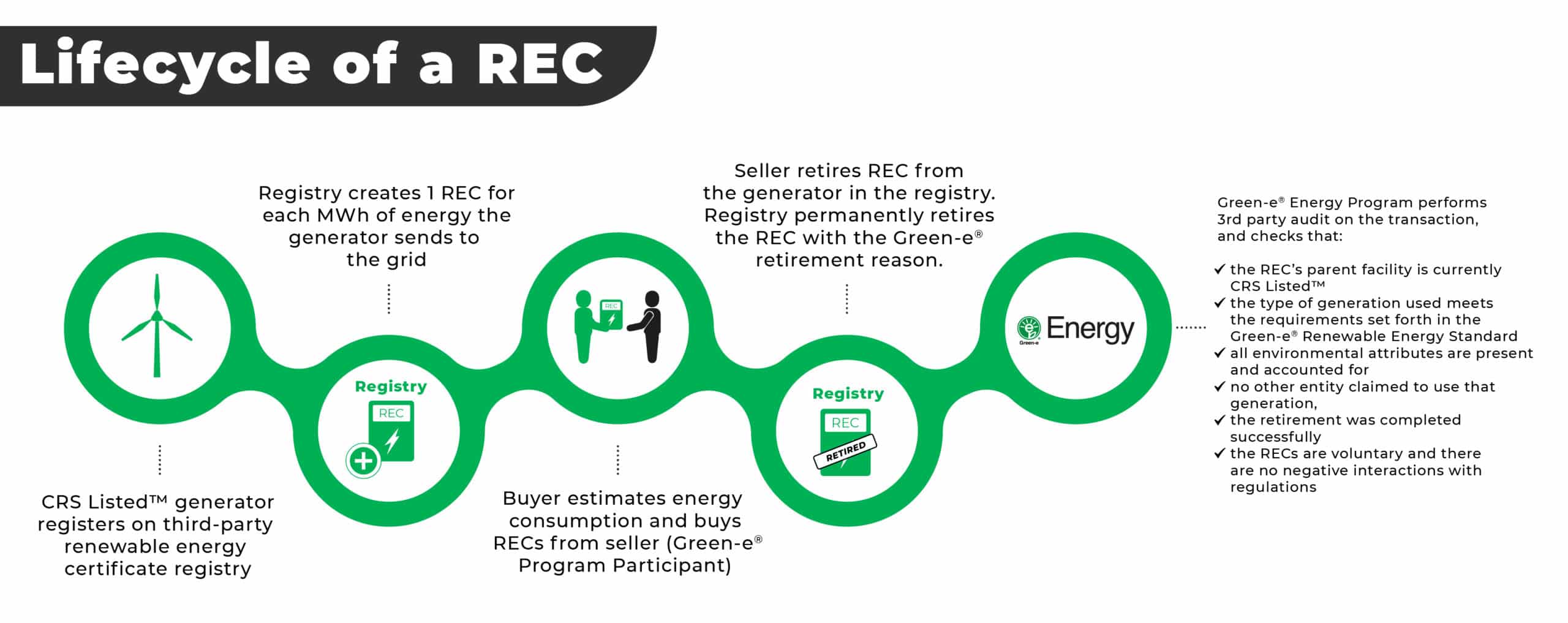Renewable Energy Certificates (typically referred to as “RECs,” and also known as “green tags” and “tradable renewable certificates”) are at the heart of sales of renewable electricity. A REC represents the environmental attributes, but not the electrons, of 1 megawatt hour (MWh) of renewable energy generation on the electricity grid. They are used to track when and where renewable energy is generated, who it is sold to, and who is using it. When electricity is generated, the electrons are all mixed together on the grid, and there is no way to know the sources from which they were generated. RECs make it possible for consumers and businesses to choose clean energy and not have it be claimed by anyone else.
When RECs are sold, they can be either bundled or unbundled from their associated electricity. Bundled RECs include their underlying electricity, while unbundled RECs do not. A MWh of electricity with the REC stripped off is known as “null electricity” or “null power”.
Tracking systems (or registries) are databases, usually electronic, with basic information about each MWh generated from generation facilities registered in the database. Electronic tracking systems allow RECs to be transferred among account holders much as in online banking. The database tracks certain information for each megawatt hour, including facility location, generation technology, facility owner, fuel type, capacity, the year the facility began operating, and the month/year the MWh was generated. Each MWh is issued a unique serial ID number and can only be held in one account at a time. That is the primary benefit of tracking systems — ownership is displayed in a clear cut way.
A tracking system can be used by regulators and other market participants as a registry of generating facilities, as a means of verifying compliance with a Renewable Portfolio Standard, for aiding in the creation of disclosure labels and accounting for scope 2 emissions, and for other purposes such as verifying wholesale supply for green power products. Typically, however, individual retail green power customers do not hold accounts on tracking systems and therefore have no visibility into their REC purchases and cannot validate this information. That is why certification, such as Green-e®, is so important for voluntary purchasers.

The Green-e® Energy program performs a rigorous 3rd party audit of the entire chain of custody of certified renewable energy — from generation to retirement — to ensure individuals and businesses are getting exactly what they paid for.
